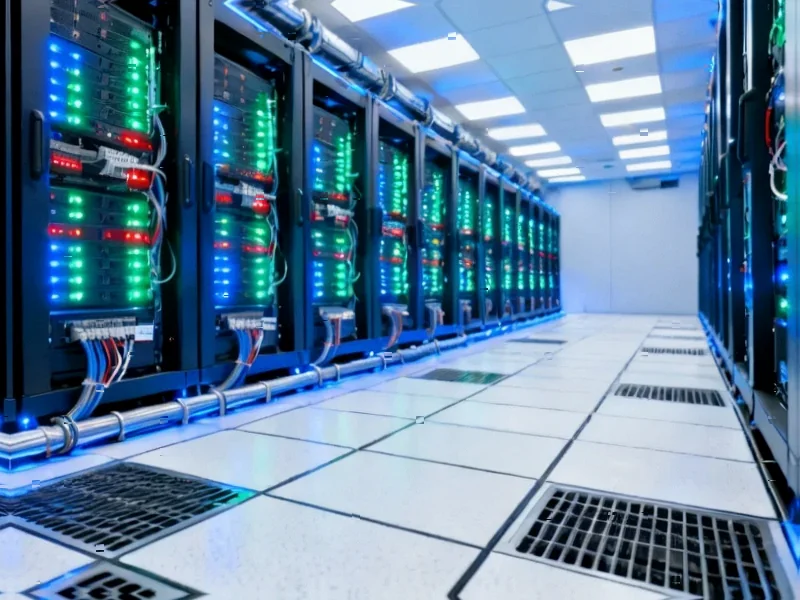According to The Verge, Amazon, Google, Microsoft, and Meta reported spending over $350 billion this year on capital expenditures, primarily AI investments, with all four companies projecting even higher spending next year that could exceed $400 billion total. The return on these massive investments remains opaque, with OpenAI reportedly hitting $12 billion in annualized revenue while burning through cash at a rate that could reach $115 billion through 2029. Investor tension is mounting, with questions about returns becoming more pointed, as evidenced by Altimeter Capital CEO Brad Gerstner questioning OpenAI CEO Sam Altman about how a company with $13 billion in revenue can justify $1.4 trillion in spending commitments. The situation highlights growing concerns that parts of the AI industry may be experiencing bubble-like conditions driven by FOMO across corporate boardrooms.
The Infrastructure Trap
What makes this spending spree particularly concerning is the fundamental mismatch between current AI capabilities and the infrastructure required to scale them profitably. The compute requirements for advanced AI systems create a catch-22: companies must build massive, expensive infrastructure to support services that may never generate sufficient revenue to justify the investment. OpenAI’s rumored need for 26 gigawatts of computing capacity—translating to approximately $1.5 trillion at current costs—represents a funding gap that even their impressive revenue growth and potential $100 billion investment from Nvidia cannot realistically bridge. This isn’t just about building better products; it’s about whether the underlying economics of generative AI can ever support the infrastructure required to deliver it at scale.
When Hype Collides With Reality
We’ve seen this pattern before in technology cycles. The dot-com bubble featured similar dynamics where companies spent heavily on infrastructure and customer acquisition with the assumption that profitability would follow. The current AI spending echoes the telecom boom of the late 1990s, where companies built massive fiber optic networks based on projected demand that never materialized. What’s different this time is the scale—$400 billion annually from just four companies dwarfs previous technology investment cycles. The critical question isn’t whether AI has value, but whether the current spending levels reflect realistic assessments of that value or boardroom FOMO driving irrational investment decisions.
The User Experience Reality Check
While companies promise AI agents that will automate “tedious tasks,” the current generation of products demonstrates a significant gap between marketing hype and practical utility. The fundamental challenge isn’t just building AI systems—it’s building systems that people actually want to use regularly for meaningful work. As OpenAI’s user metrics show, even with massive adoption, the revenue per user may never cover the compute costs. This creates a dangerous dynamic where companies are building infrastructure for use cases that don’t yet exist at scale, betting that the technology will improve fast enough to create demand that justifies the spending.
The Coming Accountability Moment
Investor patience with vague promises is wearing thin, as evidenced by the increasingly pointed questions on earnings calls. The transition from “we need to spend to position for the future” to “show me the returns” is accelerating. Meta’s experience with its Reality Labs division—which has burned through tens of billions with questionable returns—serves as a cautionary tale. When CFOs like Meta’s Susan Li respond to specific questions with “we don’t have specific targets to share,” it signals either strategic uncertainty or an unwillingness to confront the financial reality of their AI ambitions.
The Inevitable Consolidation
The most likely outcome isn’t a catastrophic bubble burst but a prolonged period of consolidation where only the best-capitalized players survive. As OpenAI’s projected burn rate indicates, even the industry leaders face sustainability challenges. The companies that ultimately succeed may not be the flashy consumer-facing applications but the enterprise-focused tools that solve specific business problems with measurable ROI. The current “spend now, figure out profitability later” approach only works while capital remains cheap and investor patience holds—both of which show signs of fraying as interest rates remain elevated and economic uncertainty persists.
When FOMO Becomes Career Risk
The most concerning aspect of this spending frenzy is the career dynamics driving it. As one investor noted, boards are demanding AI strategies from CEOs, creating pressure to spend regardless of whether the business case justifies it. This creates a “prisoner’s dilemma” where no executive wants to be the one who missed the AI revolution, even if the rational business decision would be more measured investment. The result is herd behavior where massive spending becomes a defensive career strategy rather than a thoughtful business investment. When the cycle turns—as it inevitably will—the executives who oversaw the spending will face difficult questions about why they committed billions to unproven returns.




